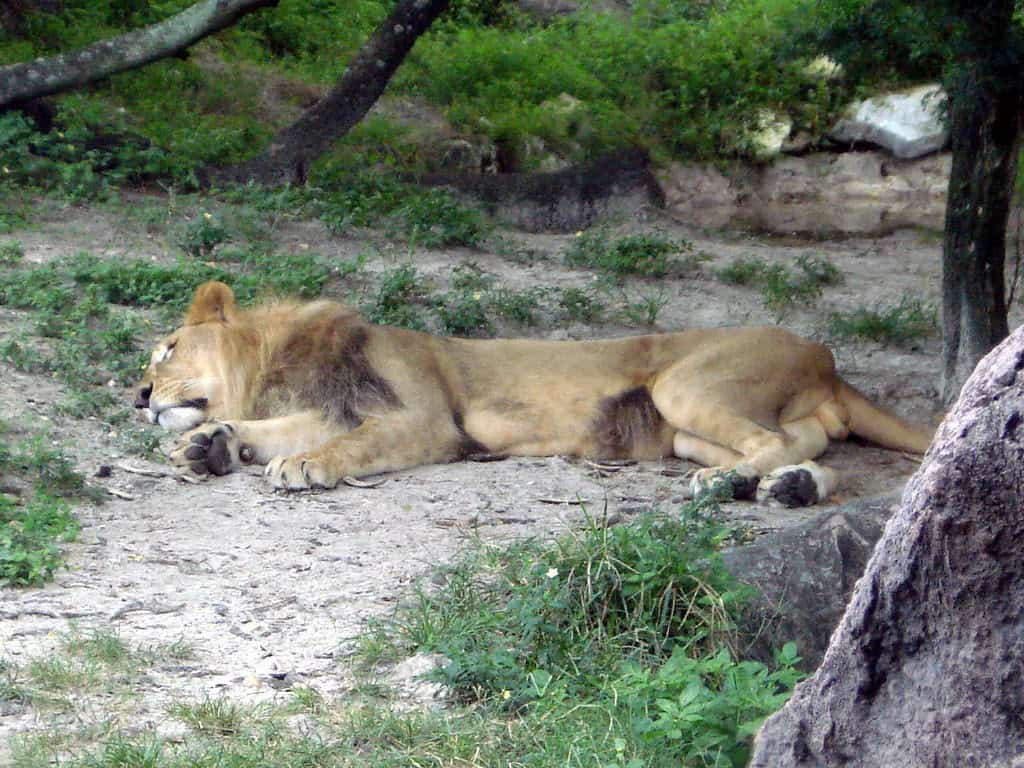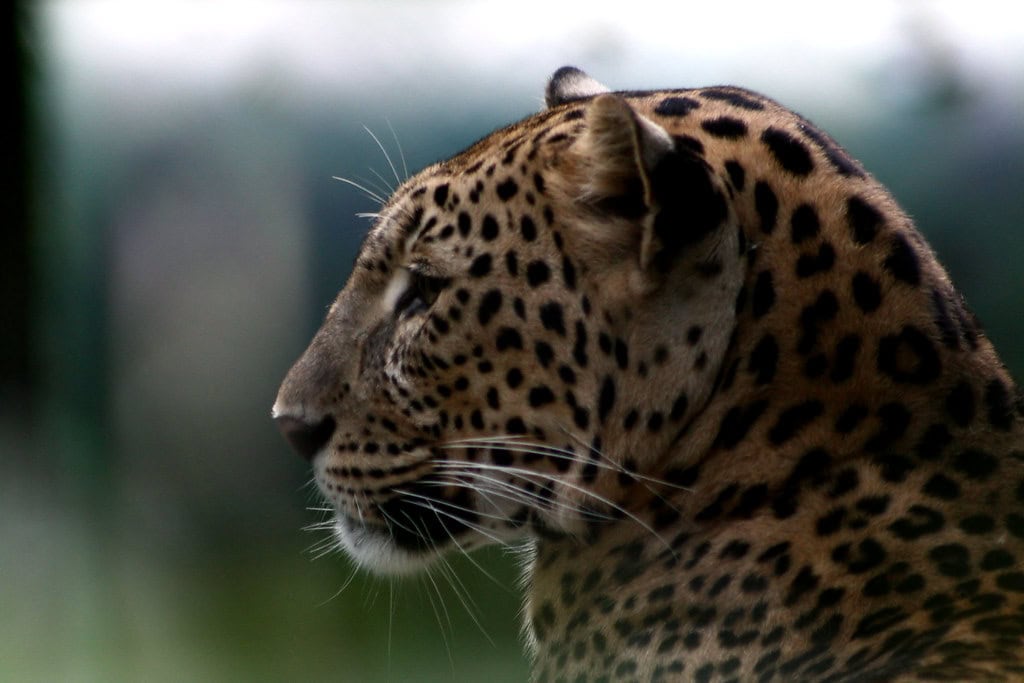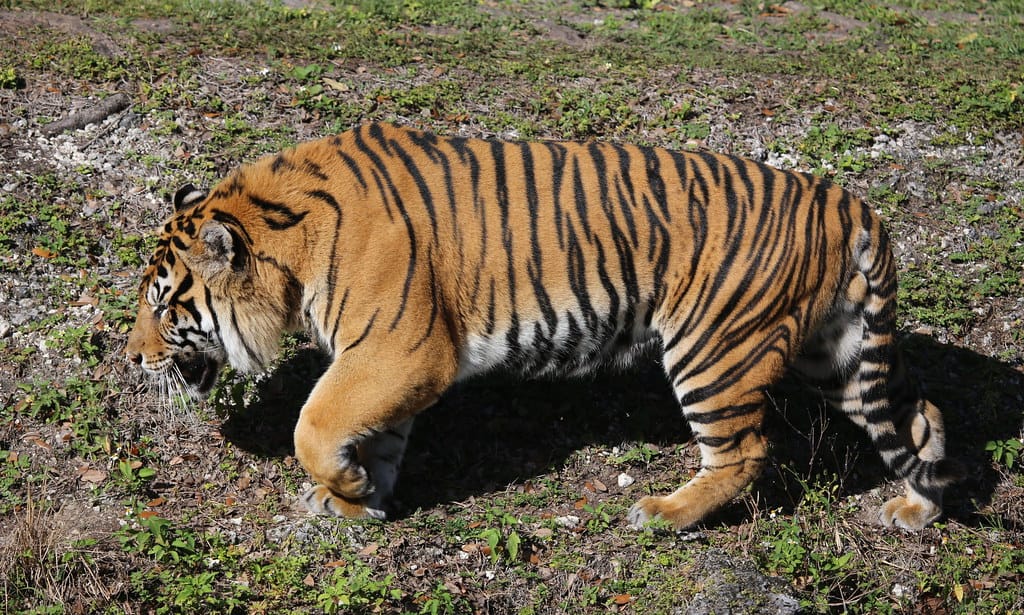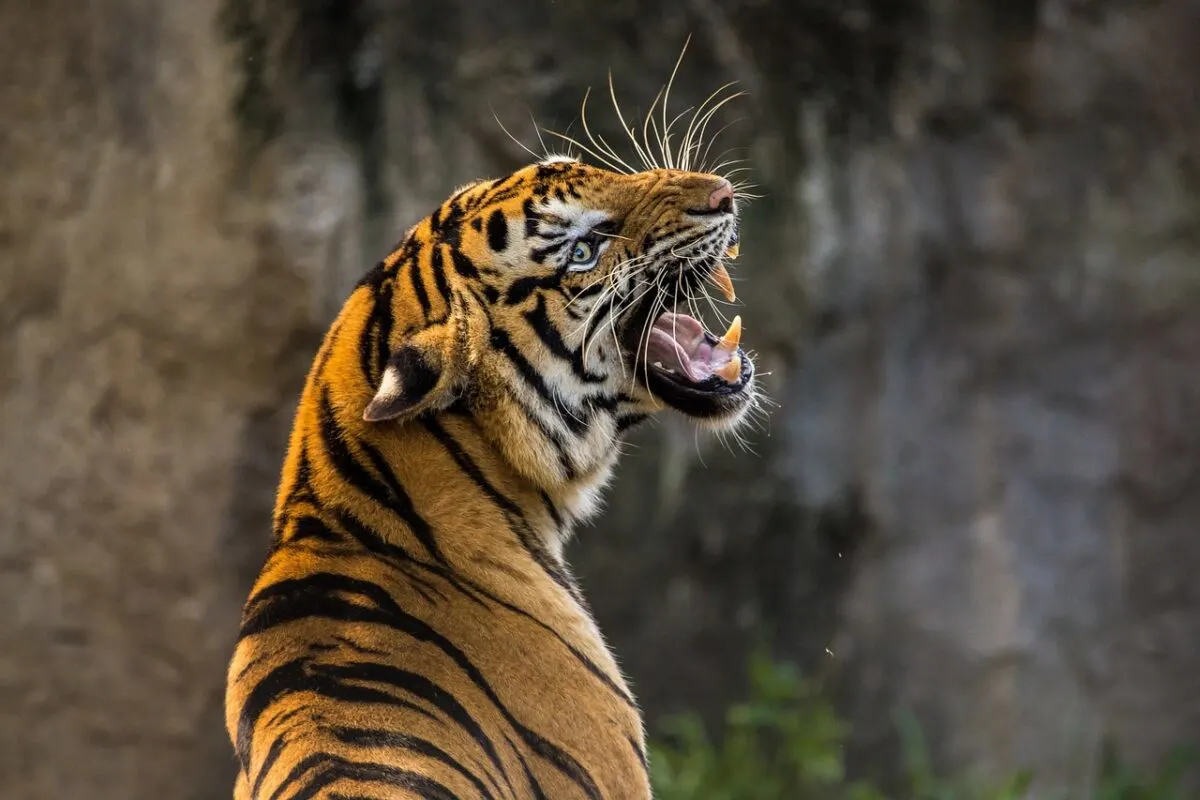Ever wondered what separates the solitary hunter from the pride leader? Tigers and lions might both rule as apex predators, but their differences go far beyond what meets the eye. These magnificent beasts have evolved distinct paths that shape everything from their hunting styles to their family dynamics. While they’re often lumped together as “big cats,” each species has crafted its own remarkable survival strategy over millions of years.
Size Makes All the Difference

Tigers generally outsize lions in impressive fashion, making them the heavyweight champions of the cat world. Male tigers can weigh between 400-670 pounds and stretch up to 10-13 feet in length, while male lions typically max out around 330-550 pounds and reach about 7-8 feet long. Think of it like comparing a linebacker to a running back – both are powerful athletes, but one’s built for pure mass and strength. This size advantage gives tigers a significant edge in raw power during any potential confrontation. The difference becomes even more striking when you consider that tigers are twice as long as lions and considerably heavier. It’s nature’s way of equipping each predator for their specific lifestyle – tigers need that extra bulk for solo takedowns of massive prey.
Social Structures Couldn’t Be More Different

Lions are the only truly social big cats, living in prides that typically include multiple lionesses, their cubs, and one or more dominant males, with this group dynamic allowing them to coordinate hunts and defend territory effectively. Meanwhile, tigers are solitary creatures who prefer to live and hunt alone except during mating or when mothers raise cubs, with encounters between adult tigers being rare and often territorial, requiring them to be stealthier and more self-reliant. Picture lions as the ultimate team players – they’ve got each other’s backs, share responsibilities, and work together like a well-oiled machine. Tigers, on the other hand, are the lone wolves of the cat kingdom. Lion prides typically comprise 10-15 members including adult females, cubs, and dominant males, with this social system providing collective security and efficient resource sharing. This fundamental difference shapes every aspect of their lives, from hunting strategies to raising young.
Habitat Preferences Tell Different Stories

Lions primarily inhabit grasslands in Africa with the exception of the Asiatic lion in India’s Gir Forest, while tigers are native to Asia with habitats ranging from tropical forests of India to the icy taiga of Siberia. Lions prefer rich grasslands from East Africa to the Kalahari Desert, avoiding dense forests because prey is scarce there, with human competition for grasslands drastically reducing their range. It’s like comparing city dwellers to mountain hermits – each has adapted to completely different environments. Tigers primarily occupy dense forests, tropical rainforests, mangroves, and grasslands across Asia including India, Indonesia, and Russia, with Bengal tigers dominating India’s Sundarbans while Siberian tigers endure harsh winters in Russia’s taiga forests. Lions prefer open savannas, grasslands, and semi-arid regions mostly in sub-Saharan Africa, with their habitat enabling group hunting strategies as open terrain facilitates visibility and coordination among pride members.
Coat Patterns Are Nature’s Fingerprints

Coloration is the easiest way to tell lions and tigers apart, with tigers carrying distinct striped patterns while lions are solid-colored, and male lions sporting thick, furry manes around their necks while female lions and all tigers do not. Bengal tigers have vibrant orange coats with black stripes that are unique to each tiger like fingerprints, while Siberian tigers are more robust with coats that grow paler in winter to blend with snowy landscapes. Think of tiger stripes as nature’s barcode – no two patterns are identical. No two tigers have the same stripe pattern, making each uniquely identifiable, with these stripes serving as practical camouflage that blends seamlessly with dappled forest light to help them move stealthily. Lions may vary in color from brown, golden, or yellowish fur to pure white, with male manes ranging from black or reddish tinges to completely blonde.
The Male Lion’s Crown

The lion’s mane is an emblem of power, virility, and majesty, with male lions beginning to grow manes around age two as a signal of sexual maturity, marking the transition from adolescence to adulthood often accompanied by behavioral changes. Manes make male lions look larger than they really are, which may function to intimidate rivals and impress prospective mates, though manes vary from one lion to another and may be entirely absent. It’s like nature’s version of a royal crown – the bigger and darker the mane, the more impressive the king. This feature likely evolved to signal fitness to females, with males having darker manes appearing to have greater reproductive success and longer pride tenure, though they’re also more vulnerable to heat stress. The male’s mane can vary from a short fringe to full coverage of head, neck, shoulders, throat, chest and belly, with large manes making males look bigger to intimidate rivals, attract females, and protect throats from attacks. Female tigers and all lions lack this distinctive feature entirely.
Hunting Strategies Reflect Their Lifestyles

In lion prides, female lionesses are the primary hunters while male lions rarely hunt except for large prey, though they play vital roles in protecting the pride and its kills. Tigers are solitary hunters that depend on sheer strength and stealth, using powerful hind legs to launch ambush attacks on prey like deer, wild boar, and massive animals like gaur, with Bengal tigers being particularly versatile in navigating forests, grasslands, and wetlands. Picture lions as a coordinated SWAT team – they plan, position themselves strategically, and execute group takedowns. Tigers are more like elite snipers, patient and precise, waiting for the perfect moment to strike. Lions bite the throat of their prey and use plans and strategy for hunting, while tigers bite the neck from behind using stealth and surprise. Tigers are solitary specialists and masters of stealth and ambush, while lions live and hunt in family groups called prides, with this core difference shaping everything from hunting tactics to physical adaptations.
Bite Force Packs Different Punches

Tigers have a bite force of more than 1,000 pounds per inch – more than twice a lion’s bite force. Lions have biting power between 650-1,000 PSI with 2.7-inch canines, trying to bite down on prey’s necks to crush vertebrae and suffocate victims. Siberian tigers are similar in most respects with 4-inch sharp claws and 3-inch canines delivering 1,000 PSI of power. Think of it like comparing a heavy-duty vise to an industrial hydraulic press – both can crush, but one brings significantly more pressure to bear. This difference makes sense when you consider that tigers often hunt alone and need that extra crushing power to quickly subdue large prey without backup. Lions have a strong bite with 690 lb pressure compared to humans’ 171 lb, with specialized teeth for gripping, tearing, and cutting meat, and jaws that can hinge open to 11 inches wide.
Speed and Agility Show Different Strengths

In literature, lion speeds are documented between 40-47 mph while tiger speeds range from 40-50 mph. Lion speed is gender-specific with females being faster than males, as the male’s mane creates drag that reduces speed, while lionesses are slim with perfect aerodynamics for faster sprinting, which is why they always lead from the front. Tigers are faster than lions with very strong hind legs that allow them to gain faster pace while sprinting and make larger leaps while running. It’s like comparing a sports car to a muscle car – both are fast, but one’s built for agility while the other’s designed for power. Tigers are known to have much more muscle power and agility than lions, with these differences allowing tigers to leap distances and heights that lions cannot, making them much more active and agile. Lions can reach 50 mph but only for short distances, while tigers reach 30-40 mph average and are generally considered more agile and active.
Diet Preferences Show Hunting Specialization

A typical lion diet includes zebra, giraffe, buffalo, wildebeest, gazelles and impala. Tigers’ main prey species are large animals like deer, buffalo and wild pigs, but they also hunt fish, monkeys, birds, reptiles, and sometimes baby elephants, occasionally killing leopards, bears, and other tigers. Lions usually hunt Thompson’s gazelle, impala, zebra, wildebeest, cape buffalo, giraffe, hippo and rhino, and frequently steal food from cheetahs, hyenas and wild dogs, while tigers eat deer, buffalo, wild pigs, monkeys, fish and birds but never steal food from other animals. Think of lions as opportunistic omnivores at a buffet – they’ll take what’s available and aren’t above snatching from others’ plates. Tigers are more like picky gourmets who prefer to catch their own fresh meals. This difference reflects their social structures – pride members can afford to scavenge and share, while solitary tigers must be self-sufficient hunters.
Lifespan Varies by Gender and Lifestyle

Female lions have an average lifespan of about 15-16 years in the wild, while males live 8-10 years, depending on their access to nutrition and natural habitat. Lions live approximately 12-18 years in the wild and over 24 years in captivity, while tigers are thought to live about 10-12 years in the wild and up to 25 years or more in zoos. Old age isn’t a luxury for most male lions due to conflicts with other males for alpha status, with males leaving their birth pride during adulthood and struggling to find power leading to early death, while lions reaching age 10 may be exiled for inability to perform needed tasks. It’s a harsh reality – male lions face constant power struggles that often cut their lives short, while female lions benefit from the protection and cooperation of pride life. Females are raised to hunt with the pride giving them feeding advantages and can live with their birth pride when older because they don’t fight for power, with attacking males leaving lionesses alone. Tigers face different challenges but generally maintain more consistent lifespans regardless of gender.
Territory Size Reflects Social Needs

Individual tigers maintain vast territories ranging from 20-100 square miles marking their boundaries through scent marking and scratches, while lion territories are typically smaller but more densely populated, averaging 100-250 square miles for an entire pride with habitat preference focusing on open savannas where cooperative hunting proves most effective. Tigers defend expansive territories that vary based on prey availability and habitat density. Picture it like comparing a sprawling ranch to a bustling apartment complex – tigers need lots of space to hunt solo, while lion prides can pack more cats into smaller areas because they share resources. Tigers and lions are territorial creatures marking and defending their domains, with territorial instincts often deterring direct contact, and tigers being known for expansive home ranges with solitary lifestyles reducing likelihood of encountering other big cat species. This territorial behavior reflects their fundamental differences – solitary tigers need exclusive hunting grounds, while social lions can cooperate within shared territories.
Swimming Abilities Surprise Most People

Tigers are native to various parts of Asia and are adept swimmers, unlike most members of the cat family. Lions, by contrast, generally avoid water except for drinking and cooling off. Tigers are masterful ambush predators relying on stealth and powerful swimming abilities. Think of tigers as the Michael Phelps of the big cat world – they’re surprisingly graceful in water and often hunt aquatic prey. This skill developed because many tiger habitats include rivers, marshes, and coastal areas where swimming became essential for survival. Bengal tigers dominate India’s Sundarbans Mangrove Forest where swimming skills are crucial. Lions evolved in drier grasslands where water sources are primarily for hydration rather than hunting grounds. It’s yet another example of how environment shapes evolution – tigers developed aquatic skills out of necessity, while lions had no such pressure in their savanna homes.
Brain Power Shows Surprising Differences

Tigers are larger, heavier, more muscular and stronger than lions, and tigers also have 25% bigger brains than lions. This neurological advantage likely relates to their solitary lifestyle – tigers need enhanced problem-solving abilities, spatial memory, and hunting intelligence since they can’t rely on pack cooperation. Think of it like comparing a chess grandmaster to a team captain – both are intelligent, but one needs individual brilliance while the other excels at group coordination. Tigers are generally considered more aggressive than lions due to their territorial nature, with the combination of hunting needs and natural drive to maintain territory, being more agile than their larger cousins and allowing them to hunt more effectively for themselves. The larger brain size supports the complex calculations needed for solo hunting – distance estimation, timing, prey behavior prediction, and split-second decision making without backup support.
Conclusion

These thirteen differences paint a fascinating picture of how evolution crafts specialists for different ecological niches. Tigers emerged as the ultimate solo operators – bigger, stronger, more agile, with enhanced brains and swimming skills to thrive in diverse Asian habitats. Lions evolved as the master cooperators, developing social structures, communication systems, and group hunting strategies that dominate African savannas. While it’s tempting to pit these iconic predators against each other, it’s clear that both tigers and lions are uniquely adapted to their environments, whether it’s the solitary strength of a male tiger or the cooperative power of an African lion, and instead of asking who would win, we should focus on preserving these majestic creatures for generations to come. Each represents millions of years of evolutionary perfection – proof that nature doesn’t create one-size-fits-all solutions, but rather sculpts each species to excel in its chosen domain. What strikes you most about these magnificent differences?
- The Most Beautiful Bird Migration Routes Across the US - August 9, 2025
- 14 Dog Breeds That Love to Cuddle - August 9, 2025
- 11 Signs Your Horse Might Be Bored - August 9, 2025

